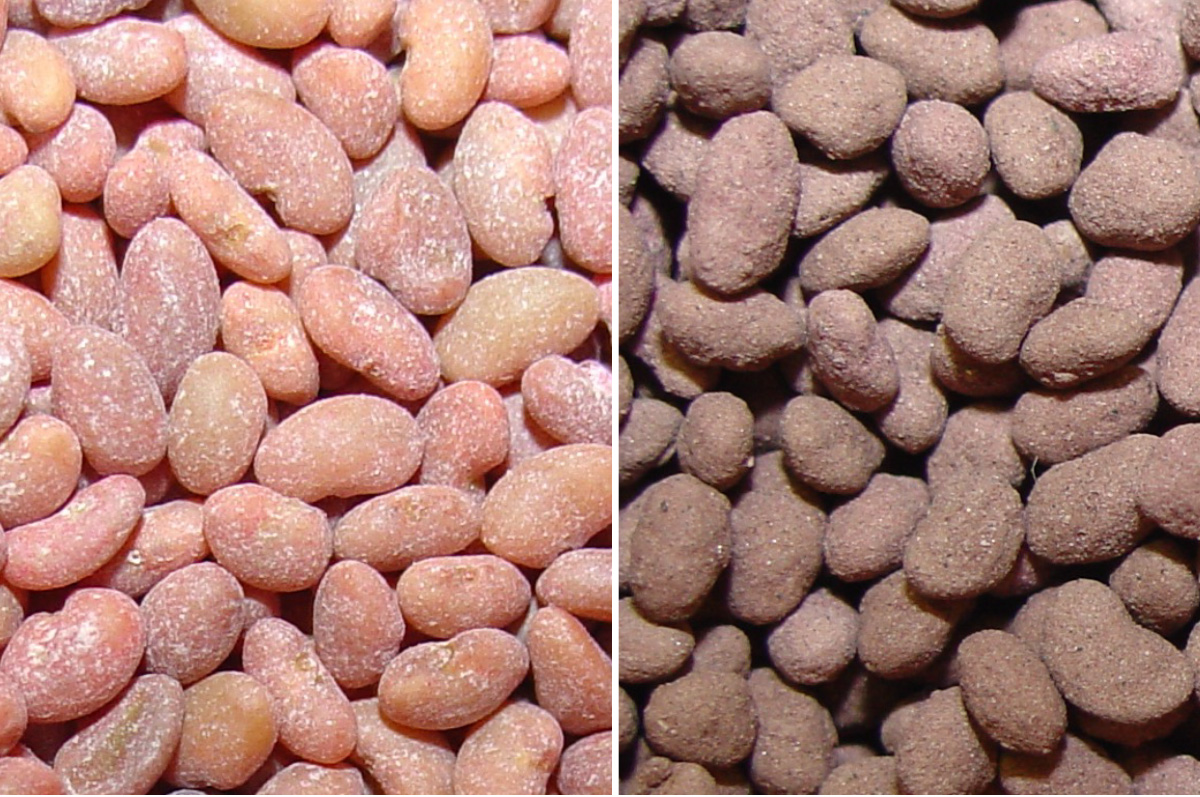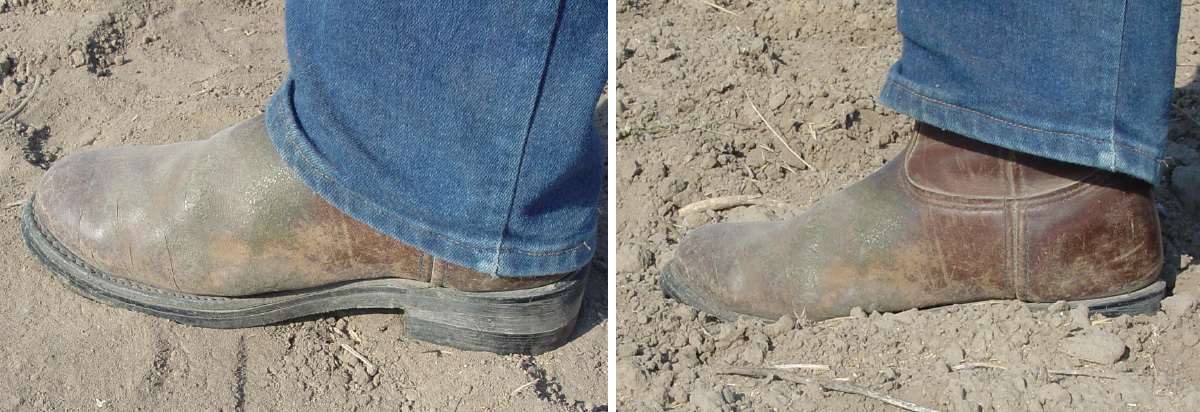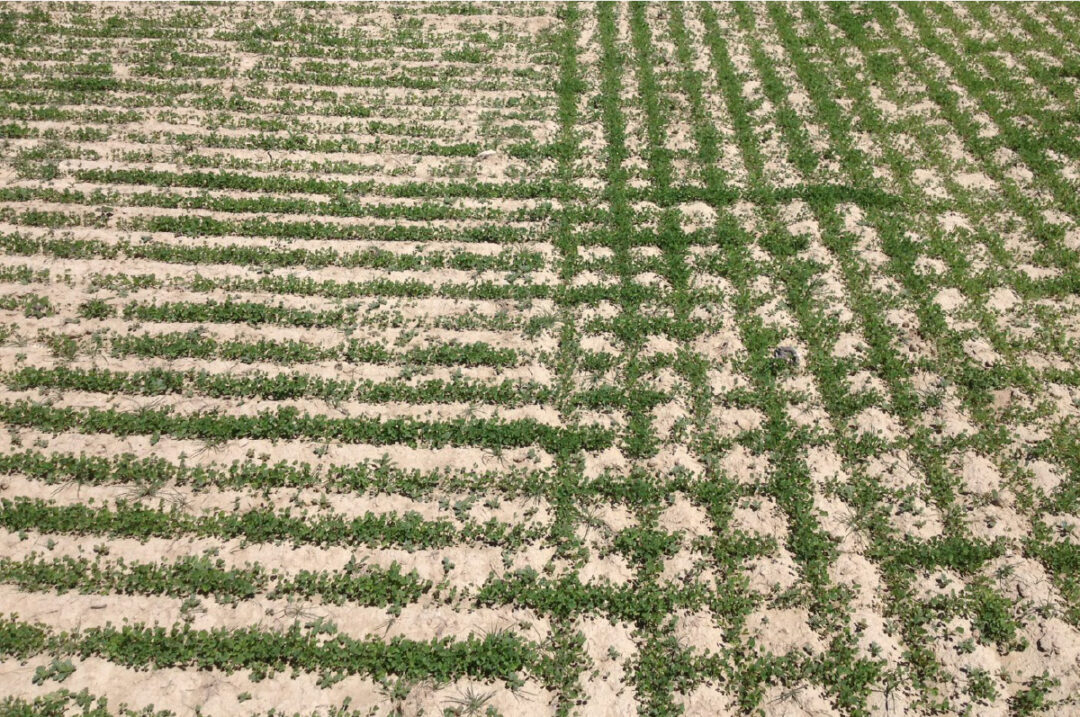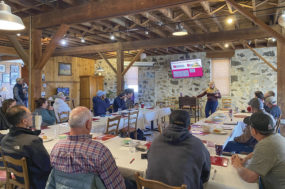Establishing a new field of any crop requires a significant investment by the farmer in land, labor, seed, and various fertilizer and chemical inputs. In the case of alfalfa, the investment is a multiyear commitment since it is a perennial crop. With that financial commitment, there comes the expectation of a good return on the investment. Getting a good initial alfalfa stand is the first step in achieving that financial goal.
Before planting a new alfalfa field, producers should consider the following information and management tips that have been shown to significantly increase the success of fall plantings of alfalfa.
Spring versus fall plantings
The decision to plant alfalfa in the spring versus fall is often made based on not having enough time following a previous crop to safely establish alfalfa in the fall. Alfalfa needs a six-week to eight-week establishment period to survive the winter conditions. If a previous crop can be harvested early enough to allow alfalfa establishment, many producers would prefer a fall planting due to the production and planting advantages it provides.
Advantages of a fall planting
If time restraints and soil moisture are not an issue, a fall planting offers producers the following advantages worth considering:
- Less weed pressure during establishment – The need for herbicides is less since some weeds are killed by fall frost and winter temperatures.
- Higher yield in the first production year versus spring planting – A fall planting allows the alfalfa to become well established before spring, which can result in a near-full cutting schedule in the first production year. The ability to harvest an early spring cut can provide additional revenue due to its higher yield and forage quality.
- Less damping-off disease problems – Spring plantings tend to have more damping-off seedling diseases due to wetter soils.
- Less insect pressure – Insect pressure is reduced due to cool fall weather.
- Spring planting is still an option – If fall planting fails or is less than optimal, producers can replant or overseed in the spring without fear of autotoxicity.
- Less soil compaction – Ground preparation in the fall often results in less soil compaction due to dryer soils.
- Reduces spring workload – Fall planting frees up more time in the spring for other fieldwork and/or crop plantings.
- Less chance of planting delays – Wet soil conditions or rain in the spring can result in planting delays.
- Fall planting takes advantage of winter and spring moisture – Fall planting often has the advantage of winter/spring moisture for alfalfa growth. Spring planting ground prep often results in the loss of soil moisture in nonirrigated regions.
Getting ready to plant
Once the decision has been made to do a fall planting, some prior planning will help ensure its success. The following is a checklist of some important factors an alfalfa producer should consider when planting alfalfa this fall.
- Site selection – Alfalfa does best in well-drained soils rather than wet, heavy clay soils. Alfalfa root diseases are more prevalent in wet soils. The optimal soil pH ranges from 6.5 to 7.5. Soils outside that range may require soil amendments to adjust pH to acceptable levels. To improve production in acidic soils, liming is often required.
- Check for previous crop herbicide residue – Some herbicides can persist for more than one crop season. Avoid carry-over injury to your new alfalfa by checking plant-back guidelines.
- Avoid autotoxicity from previous crops of alfalfa – In addition to herbicide residue carryover, you also need to avoid autotoxicity from a previous crop of alfalfa. Alfalfa following alfalfa can result in stand failures due to plant chemicals remaining in the soil from a previous crop of alfalfa. After terminating an alfalfa field, rotate out to another crop for a full year before replanting the field to alfalfa.
- Do soil testing before planting – Test soil fertility levels for both macronutrients and micronutrients. For best results, incorporate recommended fertilizer and/or soil pH amendments before planting.
- Weed control – A pre-plant herbicide can improve stand establishment. Several herbicide options are available to control weeds after planting, including conventional or Roundup Ready alfalfas. It should be noted that a good dense alfalfa stand can reduce weed pressure. If you are using a drill, use narrow row spacing or plant in two directions to minimize open space where weeds can establish (Photo 1 above).
- Variety selection – Avoid the temptation of buying alfalfa seed based solely on price. A good high-yielding and high-quality variety adapted to your location with adequate levels of disease and insect resistance is well worth the extra cost. The added yield or forage quality gained by purchasing a better variety generally pays for itself during the first year.
- Nurse crop – If a nurse crop is needed to aid in stand establishment, use a light planting rate (i.e., oats or barley at 10 pounds to 25 pounds per acre).
-
Seed treatments – Most, if not all, alfalfa seed is sold pre-inoculated with the beneficial nitrogen-fixing bacteria. A variety of seed treatments are available that can enhance seedling survival (Photo 2). Coated seed with these various additives is becoming more popular and is generally less expensive. Use the same planting rate for coated and uncoated seed. Coated seed has a higher survival rate, which compensates for fewer actual seeds per pound due to the coating.

Pre-inoculated alfalfa seed with fungicide is pictured on the left, while coated alfalfa seed (34% coating) is pictured on the right. Photo provided by Donald Miller.
- Planting date – To ensure winter survival of the new fall-planted alfalfa, you need to plant six weeks to eight weeks before the historic killing frost (four hours below 26ºF).
- Calibrate the planter – It is especially important to calibrate your planter if you are switching to coated seed for the first time. Coated seed generally flow faster through the planter than raw seed.
-
Seedbed preparation – The seedbed should be firm. Before planting, walk across the seedbed. The sole of your shoe should be visible (Photo 3).

Alfalfa needs a firm seedbed. The sole of a shoe should be visible when walking on the seedbed (left) versus a poor seedbed (right) with loose soil. Photo provided by Donald Miller.
- Check the seed depth – This is especially important! Most alfalfa stand failures are due to planting the seed too deep. Plant alfalfa seed 1/4-inch to 1/2-inch deep.
- Planting rate – Planting at a low rate to save money generally costs more money in the long run due to more weed pressure. An optimal plant density may be difficult to maintain in the third and fourth production years with an initial low planting rate. For irrigated acres, use 15 pounds to 20 pounds per acre. For dryland acres, use 8 pounds to 12 pounds per acre.
Summary
Alfalfa’s profitability is highly influenced by its stand. A poor initial stand can affect the alfalfa field’s profitability not only for the first year but over the life of the stand. Doing some advanced planning and implementing well-established best management practices can greatly increase the success of fall-planted alfalfa.
Below are the five most common causes of fall stand failures of alfalfa:
- Planting too late in the fall (alfalfa needs six weeks to eight weeks of growth before the historic killing-frost date)
- Poor seedbed preparation
- Planting the seed too deep!
- Planting a nurse crop at too high of a seeding rate
- Stand loss due to residual herbicide or autotoxicity from a previous crop of alfalfa








